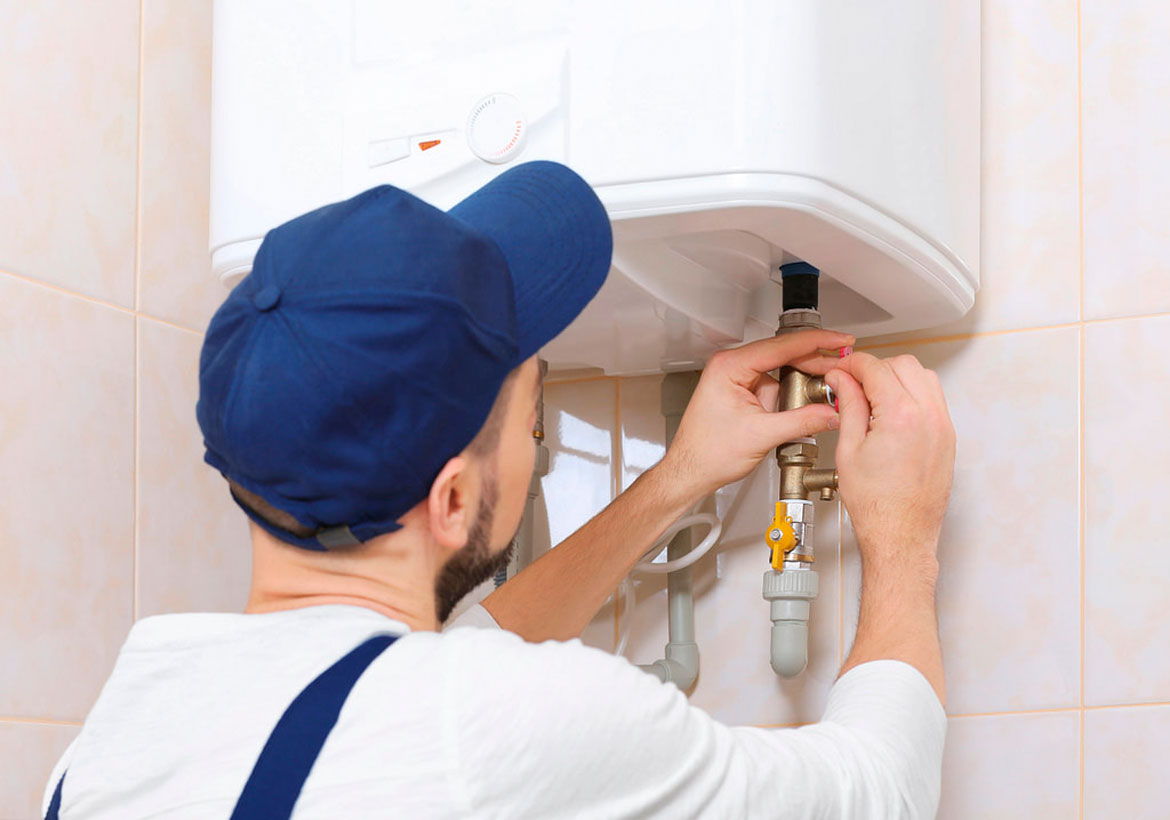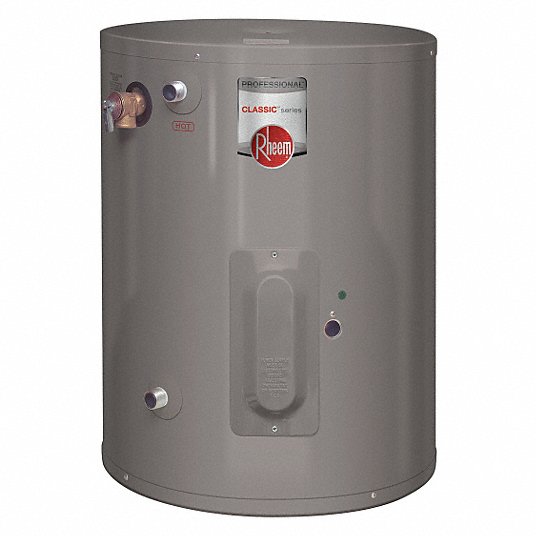Vital Actions Residential Property Owners Need to Implement While Handling Broken Water Heaters
Vital Actions Residential Property Owners Need to Implement While Handling Broken Water Heaters
Blog Article
Right here below yow will discover more awesome advice regarding Water Heater Burst.

Whether it is located in the cellar or a separate room, broken water heating units can trigger stress and anxiety. Having no hot water supply is likewise frustrating.
Call the Plumber
After doing the very first 2 safety and security steps, you should call your plumber to find right now to deal with a ruptured hot water heater. However, keep in mind that your unit will not simply collapse significantly overnight. There are typically indicators that your aging water heater has sediment accumulation in the interior. Make note of the following:
Rather, as soon as you spot these signs, have an expert come to evaluate your water heating unit storage tank. Usually, water heating systems have a life-span of concerning 8 to 12 years.
Cut Off the Cold Water Supply
Cut off the tanks faucet water supply from the resource. This goes from your primary water line into the tank. When your tank is in good condition, the cold water quits filling up when the container is full. Given that it is dripping, the water will continue to flow. Close the valve discovered at the top of the heating unit. Revolve this clockwise to shut it off. If you can not find it or reach it, you need to shut off that major water supply line outside your residential property.
Turn Off Power Source
Before calling the plumber, turned off a gas water heater by turning the temperature dial. This is usually found at the top of the thermostat. Switch over off the circuit breaker if you have a design that runs on electrical power. This will stop electrocution, specifically if there is a leak as water is a conductor. Typically, the heating element turns off when the water strikes a specific temperature. But with a damaged storage tank, it may malfunction. Cutting it off assures you stay secure.
Clean Up Residential property
After calling the plumber, paper damage by bearing in mind as well as images so you can declare your homeowner's insurance coverage. From there, begin the immediate cleanup. Secure any kind of important possessions to stop more saturating. After that, remove any standing water to avoid mold as well as mold growth. If you have a completely submersible water pump, use that to drain the water. Otherwise, the traditional pail approach will certainly additionally function. Attempt to mop out whatever, consisting of walls as well as walls. Maintain them running to maintain air distributing if you have an electric follower and also dehumidifier. This will help hinder mold growth.
Keep in mind, if you discover any concerns with your water heating unit, call the pros right away. You can not take this issue lightly due to the fact that a malfunctioning thermostat can increase water temperature to a precariously high level, leading to unintended burns.
After doing the very first two safety and security steps, you have to call your plumber to come right away to repair a fractured water heating unit. Rather, as soon as you detect these signs, have a specialist come to examine your water heating unit container. Prior to calling the plumber, closed off a gas water heating system by turning the temperature level dial. If you have a submersible water pump, utilize that to drain pipes the water. Remember, if you observe any kind of concerns with your water heater, call the pros right away.
8 REASONS YOUR HOT WATER HEATER IS NOT WORKING & HOW TO FIX
Water Heater Problems & Solutions
Loose or Damaged In-Line Valve
Unlike a water leak near the bottom of your water tank, a water leak on top of your system can be easily fixed. A common cause of water tank leaks includes a loose in-line valve. This is a handle that is located at the top of the water tank that is engineered to activate or deactivate the flow of water. To fix this problem, you will need to secure the nut that holds the ball or in-line valve in its location. If the leak becomes more severe once it is tightened, you will be required to travel to your local hardware store to purchase a new in-line valve for your water heater.
Damaged Pressure Relief Valve
Most types of water heaters are equipped with a pressure relief valve that is engineered to discharge pressure from the water tank when it becomes too high. If this valve on top of your water heater begins to leak, we recommend purchasing a new one online or from your local store. The process of removing and replacing pressure relief valves is not complicated.
No Warm Water
If you have an electric water heater in your home, the most typical cause of a lack of warm water is a broken heating element. Your water heater is equipped with two heating elements that are tasked with heating incoming water in the water tank. Once a heating element begins to malfunction, you will have little to no hot water to use for showering, cleaning, and laundry.
Low Supply of Hot Water
Are you continuously running out of warm water? This issue may be a byproduct of a cracked dip tube. This tube is engineered to push cold water to the base of your water tank to be heated. Once a crack or hole begins to form in the dip tube, the incoming supply of cold water may be released near the top or middle of your tank. As a result, the cold water on top of the tank will be sent to the faucets and showers in your house. This hot water heater problem can only be fixed by replacing the dip tube on your system. Since the process of installing a new dip tube is complex, we recommend calling a certified technician for help.
A low supply of warm water may also be a signal of excess sediment buildup in your water tank. As your water heater reaches the middle of its life cycle, minerals in water including magnesium and calcium will begin to collect at the base of the water tank. As the minerals continue to grow, there will be less room in the water tank to store hot water. To resolve this problem, flush your water heater to remove the excess minerals.
Water is Too Warm or Cold
If the water in your shower feels uncomfortable hot or cold, you can adjust the temperature of your water by changing the settings on your thermostat. Setting the temperature to 120 degrees Fahrenheit may help you save money on your utility bills. This is an excellent temperature to use if you’re worried about scalding or skin irritation. Does this temperature feel too cold? You may also adjust the thermostat to 140 degrees Fahrenheit to make your showers more pleasant. If your hot water heater is not working when you change the temperature, this is an indicator of a broken thermostat. Immediately find a certified plumbing or heating contractor in your area to repair or replace your thermostat.
Low Water Pressure
Low water pressure is not always caused by a malfunctioning water heater. If you live in an older home with smaller water pipes, the flow of water will be restricted prior to reaching our kitchen or bathroom skins. The only way to eliminate this hot water heater problem is to connect new ¾-inch water lines to your system. Another type of problem that may negatively impact your water pressure includes calcium deposits in water pipes.
As magnesium and calcium begin to form in your pipes, the diameter of your water lines will become smaller. As a result, the warm water from your water heater will not be able to travel in an efficient manner to your sinks or appliances. Since the process of replacing water pipes includes removing drywall, an average homeowner that does not have a plumbing license will not be able to fix this hot water heater problem.
https://www.wmhendersoninc.com/blog/8-reasons-your-water-heater-is-not-working-how-to-fix/

I have been very fascinated by What Do You Do When Your Water Heater Bursts? and I hope you liked our page. Remember to take the opportunity to promote this blog if you liked it. I am grateful for your time. Come back soon.
Need Help? Hire Us Now! Report this page